- News
- Reviews
- Bikes
- Components
- Bar tape & grips
- Bottom brackets
- Brake & gear cables
- Brake & STI levers
- Brake pads & spares
- Brakes
- Cassettes & freewheels
- Chains
- Chainsets & chainrings
- Derailleurs - front
- Derailleurs - rear
- Forks
- Gear levers & shifters
- Groupsets
- Handlebars & extensions
- Headsets
- Hubs
- Inner tubes
- Pedals
- Quick releases & skewers
- Saddles
- Seatposts
- Stems
- Wheels
- Tyres
- Tubeless valves
- Accessories
- Accessories - misc
- Computer mounts
- Bags
- Bar ends
- Bike bags & cases
- Bottle cages
- Bottles
- Cameras
- Car racks
- Child seats
- Computers
- Glasses
- GPS units
- Helmets
- Lights - front
- Lights - rear
- Lights - sets
- Locks
- Mirrors
- Mudguards
- Racks
- Pumps & CO2 inflators
- Puncture kits
- Reflectives
- Smart watches
- Stands and racks
- Trailers
- Clothing
- Health, fitness and nutrition
- Tools and workshop
- Miscellaneous
- Buyers Guides
- Features
- Forum
- Recommends
- Podcast
£899.99
VERDICT:
Looks good on paper but lacks the feedback and excitement of cheaper alloy framed bikes I've tested
Weight:
8,680g
Contact:
At road.cc every product is thoroughly tested for as long as it takes to get a proper insight into how well it works. Our reviewers are experienced cyclists that we trust to be objective. While we strive to ensure that opinions expressed are backed up by facts, reviews are by their nature an informed opinion, not a definitive verdict. We don't intentionally try to break anything (except locks) but we do try to look for weak points in any design. The overall score is not just an average of the other scores: it reflects both a product's function and value – with value determined by how a product compares with items of similar spec, quality, and price.
What the road.cc scores meanGood scores are more common than bad, because fortunately good products are more common than bad.
- Exceptional
- Excellent
- Very Good
- Good
- Quite good
- Average
- Not so good
- Poor
- Bad
- Appalling
The Sportive Racing is one of Ribble's latest carbon road bikes. As you can no doubt guess from the title, it's designed to sit somewhere between a racer and something a little more relaxed. A quick yet comfortable mile-muncher, if you like. This one is a special edition, too, so you are getting even more bang for your buck compared with the rest of the range.
Ribble has sold its own-brand bikes for years, and by using its Bikebuilder you can create virtually any model to your own specification and budget. The cheapest Sportive Racing model comes with 9-speed Shimano Sora for £899.95; the version on test has an upgrade to 105 (5800) front and rear derailleurs, shifters and an 11-speed cassette for an extra 4p – so if you can stretch to that it looks a pretty good investment.
Half of that budget goes on the frameset (£471 when you include the headset, seat clamp and expanding fork bung). This, with a claimed weight of 1100g (56cm, frame only), looks to offer pretty good value for money.
How does it ride?
For a bike with this kind of stack to reach ratio (stack and reach are the vertical and horizontal measurements from the centre of the bottom bracket to the top of the head tube) –1:52 for this 558mm equipped (M53) model – you'd be expecting a more relaxed ride than on a race bike (1:40 ratio). You'd also be expecting comfort, but this is where the Sportive Racing falls down. Part of that is down to its use of material.
Carbon fibre is just like any other bike building material – they all have their own general properties, but there's more to it than that. Whether you are using steel, alloy or carbon, the specific grade has to be right, plus things like wall thicknesses or, in respect to carbon, fibre layups really make a difference to how the bike actually rides, handles and feeds back what is going on to you, the rider.
The Sportive Racing feels very one-dimensional when it comes to communication between bike and rider about what the bike is up, and a lot of that is down to the way the frame is built. By going for such a stiff finished product Ribble seems to have removed any 'welcome' flex from the frame.
What do I mean by welcome flex? Well, stiffness is great for power transfer – you want your pedalling effort delivered to the back wheel as fast as possible – but while outright rigidity is fine for something like a track bike that is going to be ridden hard on a smooth surface, the real world requires a bit of compromise. It's that flex, the slight movement of the tubes under load, that help deliver a comfortable ride over distance. The way it absorbs the little impacts from the road surface, the way it squirms a little underneath you as you bank it fully over into a high speed bend... those messages that the frame is allowing to travel through to the handlebar gives you, the rider, the information you need to get the most out of your ride.
This is what is missing from the Ribble. There is no conversation, just the odd shouty message from the frame as you hit a pothole or really rough surface.
With carbon fibre, the way to deliver these 'messages' is to lay the carbon fibres up in a particular way, to control the direction of their travel. We often bang on about frames being 'laterally stiff yet vertically compliant' but that is exactly what a good carbon frame offers. Carbon fibres laid in certain directions at certain places to control exactly what the designer wants that part of the frame to do and, the big bit: make every bit work together as a whole.
This might sound like journalistic hype, but when you've ridden more than a hundred bikes in the last few years you notice the differences, and I just found the Racing Sportive a bit frustrating. It will get you from A to B and at much the same speed as its competitors, but the ride won't be as much fun.
One of the most noticeable places this showed up was on high speed descents. To be fair to the Ribble, the handling is pretty tight due to that oversized front end, including the tapered steerer and massive down tube – great if things are super-smooth as you can point the bike where you want it and it'll go there.
Most roads aren't super-smooth, though, and on some of my favourite test hills I always felt like I was playing catch-up. One quick bend I go through has a little ripple in the tarmac; hit it above 40mph and no matter what bike you're riding the front tyre will leave the road for a fraction of a second. You know it's coming, but you still get that feedback about what the front tyre is doing, so you're already lining things up for when it makes contact with the ground again, so you can change direction into the next bend.
The Ribble doesn't give you that feedback, so you react just a split second later, which puts you slightly deeper into the next corner, and the next, and so on, because of the constant corrections you are making. And because the feedback from the bike isn't there, you can't nail those corrections either.
Just to be clear, it's nothing to do with the bike's geometry. The handling itself is exactly as you'd expect it to be on a bike of this type: pleasingly direct – not as sharp as a full-on race bike, but I wouldn't expect it to be. On smooth, flat roads the Sportive Racing will move on at a fairish old lick, and thanks to the pretty tall 176mm head tube and top tube of 558mm, it does put you in a more upright position for a bit of added comfort.
It's all pretty tight, though, and the Ribble still lives up to the Racing part of its name; you can see how the mix of relaxed and sporty work together, that tallish head tube putting you in a less back-troubling position for climbing on a sportive route, while also allowing you to let it all hang out on the way back down as long as things aren't too technical, when the lack of feedback would impair your ability to make high-speed corrections.
Frame & fork
The majority of the tubing is square in profile and rather large in cross-section, which is the other deciding impact on comfort. This type of bike normally has a more svelte top half of the frame to absorb road buzz, especially at the seatstays. The Ribble doesn't, and when paired with the layup of the carbon fibre mentioned above, makes for a bike that isn't something you'd want to spend six or seven hours aboard on typical sportive event roads, country lanes.
The fact that those seatstays are also quite a boxy wishbone style means it offers very little clearance for the rear tyre; the Sportive Racing can take a maximum 25mm width tyre purely, by the looks of it, because of this seatstay arrangement. It's a shame because the rest of the frame and fork could easily take 28s, which would deliver a much needed comfort boost.
Take the comfort thing away for the moment, though, and what you are left with is a very stiff and responsive frame under acceleration or when climbing. The down tube, tapered head tube, huge PF30 bottom bracket shell and massive chainstays mean the Ribble certainly lays the power down on the road.
The Sportive Racing also has internal cable routing, which is a nice touch as it gives a smoother look and offers protection from the weather. Even at the bottom bracket you'll find a removable cover where a lot of manufacturers leave things open to the elements.
It's set up for electronic gearing too, with holes on the front of the down tube for a Shimano Di2 front mech and one between the down tube water bottle bolts for a battery. It's a little odd, though, considering Shimano moved to seatpost batteries a good few years ago.
Finishing kit
As I've already mentioned, the Ribble comes with a fair bit of 105 11-speed, which is good to see considering it's one of the best value for money groupsets on the market, in my eyes. You get the shifters and mechs here, although the chainset is lower in the pecking order, an RS500 model. It doesn't have the cool four-arm design of the 105 chainset and the shifting isn't as crisp, especially under load.
It's a compact model with 50/34 chainrings, paired with an 11-28 cassette to provide a good spread of gears for most, in the hills and on the flat.
As for the braking, the Racing Sportive uses own-brand dual-pivot callipers which look like Tektros, and they come with cartridge style replaceable pads. The stopping power is pretty good and I wouldn't rush to upgrade them immediately.
The wheels are Rodi Airline 5s, which Ribble itself sells for £51.99 a pair, and with their claimed weight of 2150g they certainly take the edge off any nimbleness the bike might have. They are tough and reliable, though, staying true throughout the entire test period.
Adding to that revolving weight are the Continental Ultra Sport wire bead tyres, though they do offer decent rolling resistance, and as far as puncture resistance goes I haven't had any issues. I've ridden Ultra Sports on loads of bikes and they do offer a good balance of value for money and performance.
The rest of the finishing kit is quite modest: Deda's RHM01 handlebar and Zero 1 stem, a CSN seatpost and Selle Italia X1 Plus saddle. It's all decent performing kit for the money, although the Deda handlebar tape is very thin, which doesn't help in the comfort department.
The saddle is pretty good, with a fair amount of hull flex and padding but still firm, which means comfort to support balance is spot on.
This whole build weighs in at 8.68kg (19.13lb).
Value
On the face of it, a carbon frame, full carbon fork and a 105 groupset for a penny under 900 quid looks like a bit of a deal. Build it yourself from Ribble's site, buying each piece separately, and it'll cost you £16 more, so it makes sense to get it delivered ready-assembled. And it does make the Sora base model, at 4p less, look rather expensive.
But if the whole riding experience is more important to you than having a carbon frame, I suggest it's well worth looking at aluminium options. BTwin's Ultra 700 AF offers roughly the same finishing kit and overall weight as the Ribble for £150 less, and a much more involving ride between rider and bike, while Verenti's Technique, £250 cheaper but a touch heavier with Tiagra finishing kit, has a much more fun ride. The £600 Vitus Razor VR – currently reduced to less than £500 – is well worth a look too.
Overall, the Ribble Sportive Racing looks a very capable machine and a relative bargain, but I can't help feeling the ride quality lets it down. When you find yourself in a situation where you really want to know what the bike is up to underneath you, you miss that feedback from the frame. This type of bike should offer two things in my opinion, a responsive ride and a comfortable one, both of which the Ribble lacks, because of the design of the frame and the way it's been put together.
If you really must have carbon fibre then, yes, the Ribble is a decent option, but there are others out there also worth considering. For just £100 more, the BTwin Mach 720 offers the feedback the Ribble lacks, plus BTwin has designed it along chunky lower half/thin, flexible upper half lines, to combine stiffness with comfort. Also £999.99, the Boardman Team Carbon with Shimano Tiagra has to be worth a test ride – and for £50 more you can get it with 105 (and a T-shirt)...
Another option is to spec your own build – in the shape of the Ribble Gran Fondo, a bike that I've previously owned. Although the steering doesn't quite have the sharpness of the Sportive Racing because of its straight 1 1/8in head tube, it does give you that feedback lacking in the Sportive Racing, the 'conversation' between rider and bike. The latest version of the Gran Fondo frame comes with internal cable routing ready for electronic groupsets too, and even though it comes in at £1,012 for a similar build (that is full 105, though), it's an extra 100 or so quid well spent.
Verdict
Looks good on paper but lacks the feedback and excitement of cheaper alloy framed bikes I've tested
road.cc test report
Make and model: Ribble Sportive Racing Special Edition
Size tested: 54
About the bike
State the frame and fork material and method of construction. List the components used to build up the bike.
Sportive Racing Special Edition Shimano 105 5800
Special Edition specification
Rodi Airline 5 Wheels
Shimano 105 groupset
RS500 chainset - 172.5mm 34/50
11/28 cassette
Short cage rear derailleur
Ribble branded brakes
Finishing kit
Deda RHM01 Black Handlebars
Deda Zero 1 Black Handlebar Stem
Selle Italia X1 plus
CSN Superleggera Seatpillar
Deda Cork Handlebar Tape - Black
Continental Ultrasport Rigid tyres
Tell us what the bike is for, and who it's aimed at. What do the manufacturers say about it? How does that compare to your own feelings about the bike?
Ribble says, "The Sportive Racing is our very latest carbon bike using Toray T700/T800 carbon offering the perfect blend of position, comfort and speed, making this frame equally suitable for sportives or amateur road racing.
At the front of the frame we have increased the head tube size in proportion to the frame size giving a very comfortable position. The head tube and fork are now asymmetric 1 1/8" to 1.5" which offers very precise smooth steering. At the back of the frame we have increased the size of the wishbone seat stay which increases the responsiveness and stiffness of the frame making the frame accelerate as soon as you get out of the saddle. To help reduce weight, it is a full carbon fork.
Our new tubing profile moves away from the traditional round profile to a more square profile increasing stiffness where you need it most at the bottom bracket and head tube. The bottom bracket is a press fit design which increases the power transfer from pedals to rear wheel."
The Ribble is stiff, but for a sportive style machine I reckon it could do with more comfort.
Frame and fork
Overall rating for frame and fork
8/10
Tell us about the build quality and finish of the frame and fork?
Things look pretty good: a naked carbon finish paired with gloss paintwork.
Tell us about the materials used in the frame and fork?
Toray T700 and T800 grade carbon fibre is used in the construction, with the fork also having a carbon steerer.
Tell us about the geometry of the frame and fork?
Full details here but it is quite a relaxed formula.
How was the bike in terms of height and reach? How did it compare to other bikes of the same stated size?
With a stack to reach ratio of 1.52 the Ribble is towards the endurance end of the range, a little shorter and more upright than most race bikes.
Riding the bike
Was the bike comfortable to ride? Tell us how you felt about the ride quality.
For this style of bike it could have been better, a stiff frame top and bottom.
Did the bike feel stiff in the right places? Did any part of the bike feel too stiff or too flexible?
Stiffness levels are high at the head tube and BB area.
How did the bike transfer power? Did it feel efficient?
No real issues here, the large cross sections of the down tube, head tube and BB area mean power transfer isn't compromised.
Was there any toe-clip overlap with the front wheel? If so, was it a problem?
No
How would you describe the steering? Was it lively, neutral or unresponsive? Neutral, considering the reasonably steep angles.
Tell us some more about the handling. How did the bike feel overall? Did it do particular things well or badly?
Thanks to the tapered head tube the steering is tight and direct, although feedback from the frame is muted so you don't always know what is going on.
Which components had the most effect (good or bad) on the bike's comfort? would you recommend any changes?
The saddle is the only real nod towards comfort.
Which components had the most effect (good or bad) on the bike's stiffness? would you recommend any changes?
Deda's budget cockpit is surprisingly stiff.
Which components had the most effect (good or bad) on the bike's efficiency? would you recommend any changes?
Lighter wheels would really transform the performance of the bike.
Rate the bike for efficiency of power transfer:
8/10
Rate the bike for acceleration:
7/10
Rate the bike for sprinting:
7/10
Rate the bike for high speed stability:
7/10
Rate the bike for cruising speed stability:
8/10
Rate the bike for low speed stability:
8/10
Rate the bike for flat cornering:
7/10
Rate the bike for cornering on descents:
6/10
Rate the bike for climbing:
7/10
The drivetrain
Rate the drivetrain for performance:
7/10
Rate the drivetrain for durability:
8/10
Rate the drivetrain for weight:
7/10
Rate the drivetrain for value:
8/10
Tell us some more about the drivetrain. Anything you particularly did or didn't like? Any components which didn't work well together?
The 105 parts are top notch, with the chainset letting things down a little. While the brakes are pretty good they aren't up to the performance of 105 callipers so I'd look to upgrade here, though not urgently.
Wheels and tyres
Rate the wheels for performance:
6/10
Rate the wheels for durability:
8/10
Rate the wheels for weight:
6/10
To be fair they aren't too bad for the price.
Rate the wheels for comfort:
7/10
Rate the wheels for value:
6/10
Tell us some more about the wheels.Did they work well in the conditions you encountered? Would you change the wheels? If so, what for?
Ignoring the RRP, for what you can buy the Rodi wheels for, they can't really be knocked in terms of durability and performance.
Rate the tyres for performance:
7/10
Rate the tyres for durability:
8/10
Rate the tyres for weight:
7/10
Rate the tyres for comfort:
8/10
Rate the tyres for value:
8/10
Tell us some more about the tyres. Did they work well in the conditions you encountered? Would you change the tyres? If so, what for?
For budget tyres the Ultra Sports are decent performers. Good grip levels and rolling resistance.
Controls
Rate the controls for performance:
8/10
Rate the controls for durability:
8/10
Rate the controls for weight:
7/10
Rate the controls for comfort:
7/10
Rate the controls for value:
7/10
Tell us some more about the controls. Any particularly good or bad components? How would the controls work for larger or smaller riders?
The Deda stuff is good for the money and so is the CSN seatpost. There is nothing flash here but it fits the budget.
Your summary
Did you enjoy riding the bike? It was okay, but lacked feedback.
Would you consider buying the bike? No
Would you recommend the bike to a friend? Possibly, but I'd recommend alternatives.
Rate the bike overall for performance:
7/10
Rate the bike overall for value:
6/10
Use this box to explain your score
After initial rides on the Ribble I was quite impressed, but the more confident you get with it, the more you notice the lack of feedback. I'm not sure about the whole value issue either. It seems pricey when you look at the likes of recent alloy bikes I've tested.
About the tester
Age: 37
I usually ride: This month's test bike My best bike is: Mason Definition
I've been riding for: 10-20 years I ride: Every day I would class myself as: Expert
I regularly do the following types of riding: time trialling, commuting, club rides, sportives, fixed/singlespeed
Since writing his first bike review for road.cc back in early 2009 senior product reviewer Stu has tested more than a thousand pieces of kit, and hundreds of bikes.
With an HND in mechanical engineering and previous roles as a CNC programmer/machinist, draughtsman and development engineer (working in new product design) Stu understands what it takes to bring a product to market. A mix of that knowledge combined with his love of road and gravel cycling puts him in the ideal position to put the latest kit through its paces.
He first made the switch to road cycling in 1999, primarily for fitness, but it didn’t take long for his competitive side to take over which led to around ten years as a time triallist and some pretty decent results. These days though riding is more about escapism, keeping the weight off and just enjoying the fact that he gets to ride the latest technology as part of his day job.
Latest Comments
- lwrncc 3 sec ago
Something like an eeslik seatpost would just work better. But I suppose they should be commended for trying new manufacturing and designs that may...
- David9694 3 hours 12 min ago
Active travel schemes are 'squeezing out motorists in favour of cyclists' Go Rochdale!
- mdavidford 3 hours 48 min ago
You don't like the Look of it then?
- chrisonabike 3 hours 59 min ago
TBF I think their complaint was with the design as proposed. There would be a cycle path with cyclists moving in two directions with little buffer...
- dh700 7 hours 20 min ago
I'd argue that nothing at all is wrong with the bans that you describe -- and they exist in some places....
- slc 7 hours 42 min ago
You seem to be forgetting the first article in our great constitution. A citizen has the right to store motor vehicles immediately outside their...
- Jakrayan 8 hours 49 min ago
Yeah, the number of times I've had oncoming drivers overtake a stationary vehicle - parked car on their side for example - forcing me to hit the...
- bobbinogs 9 hours 6 min ago
I always think that the Pearson font is such a dreadful choice, it's almost impossible to read.



































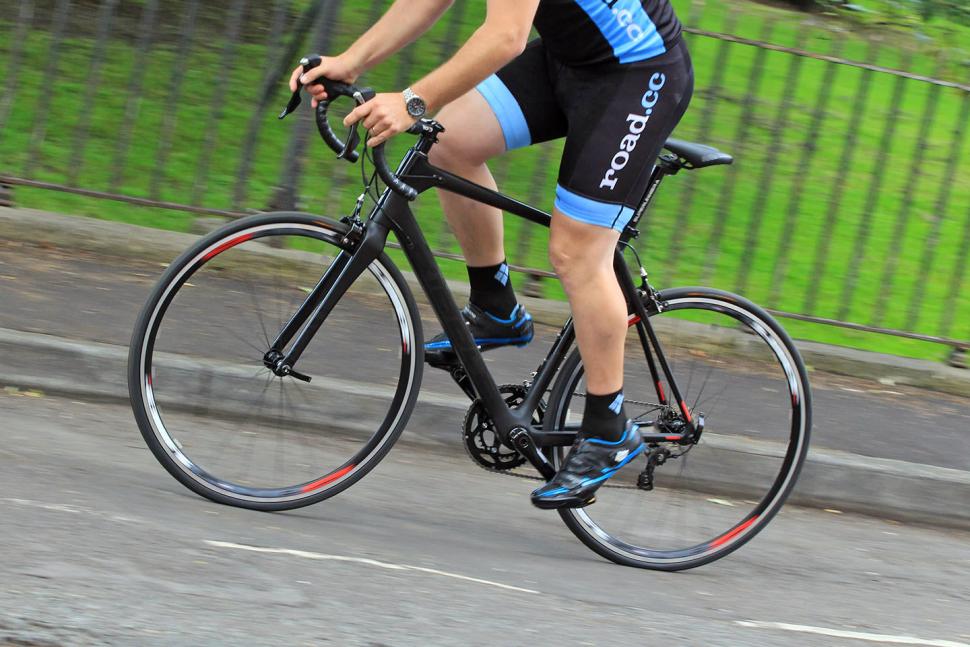
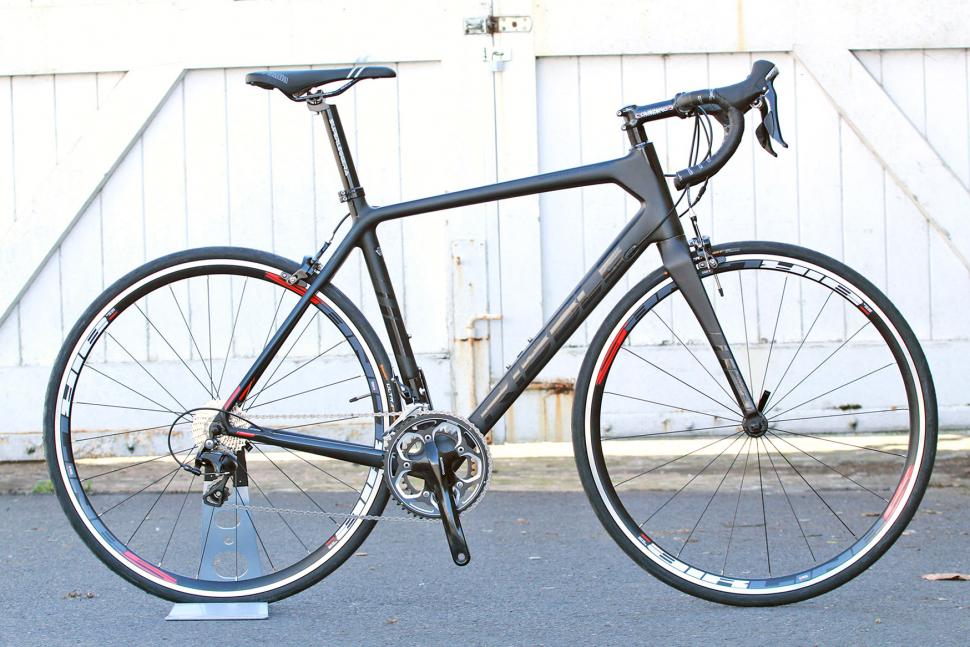
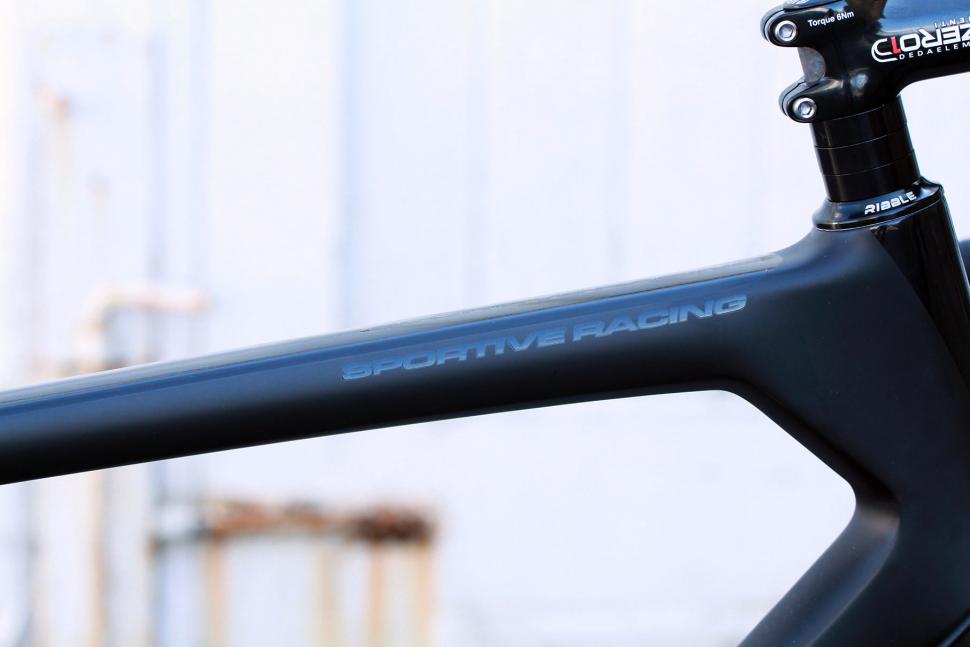


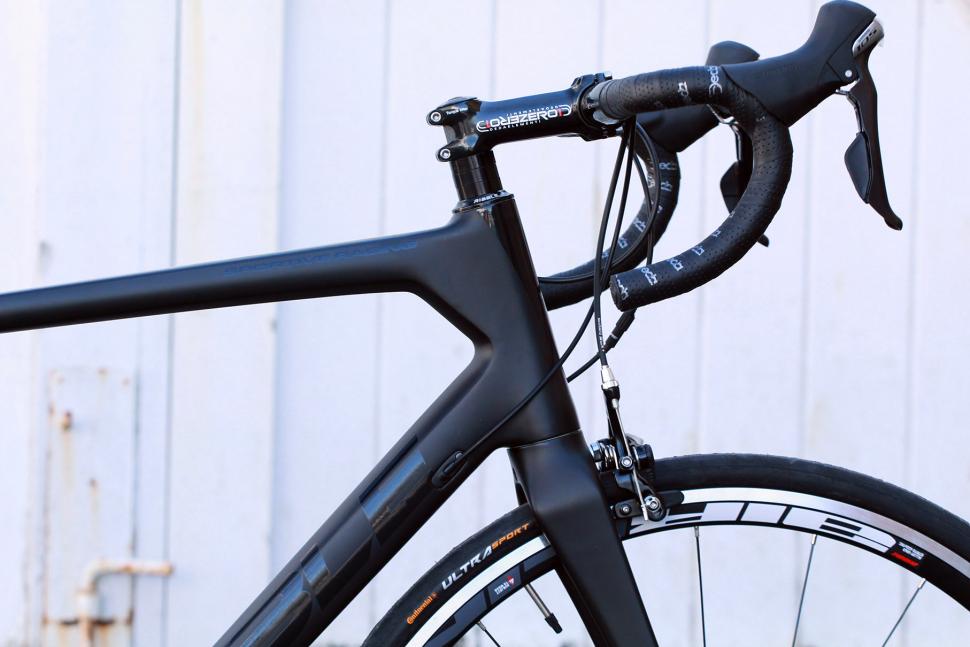

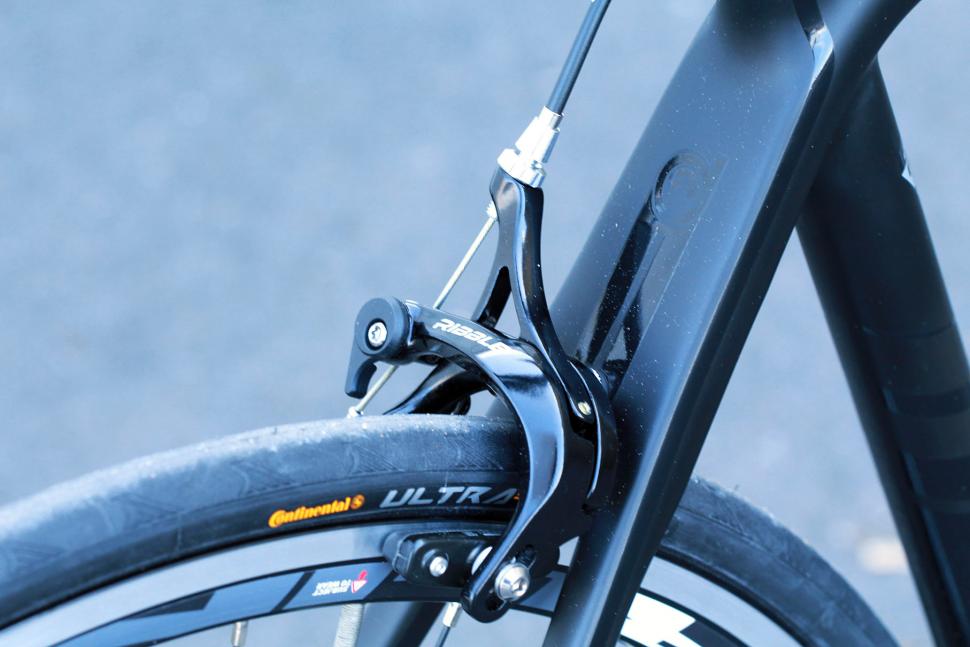
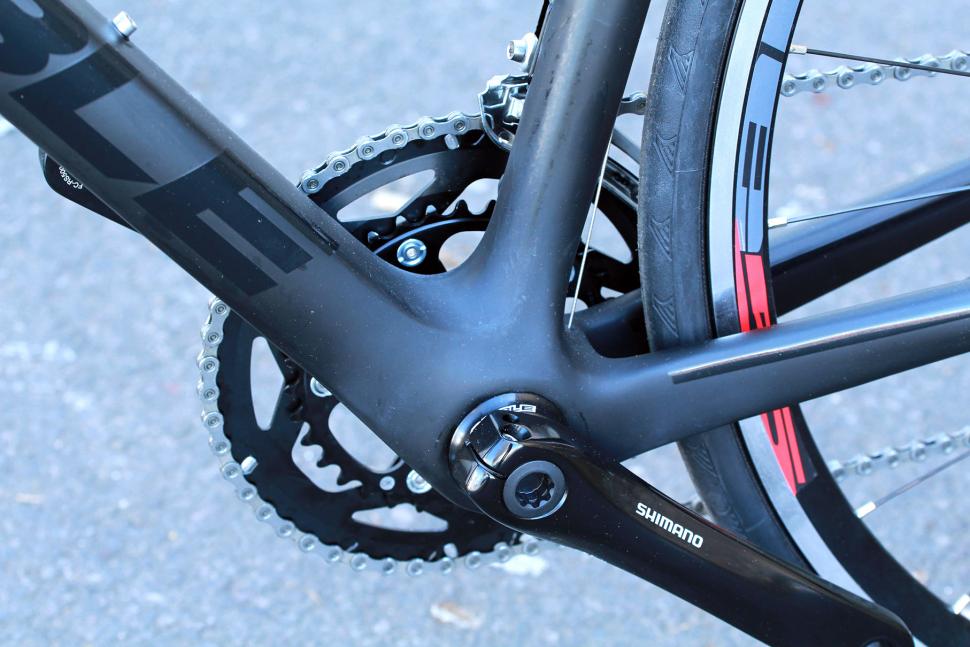
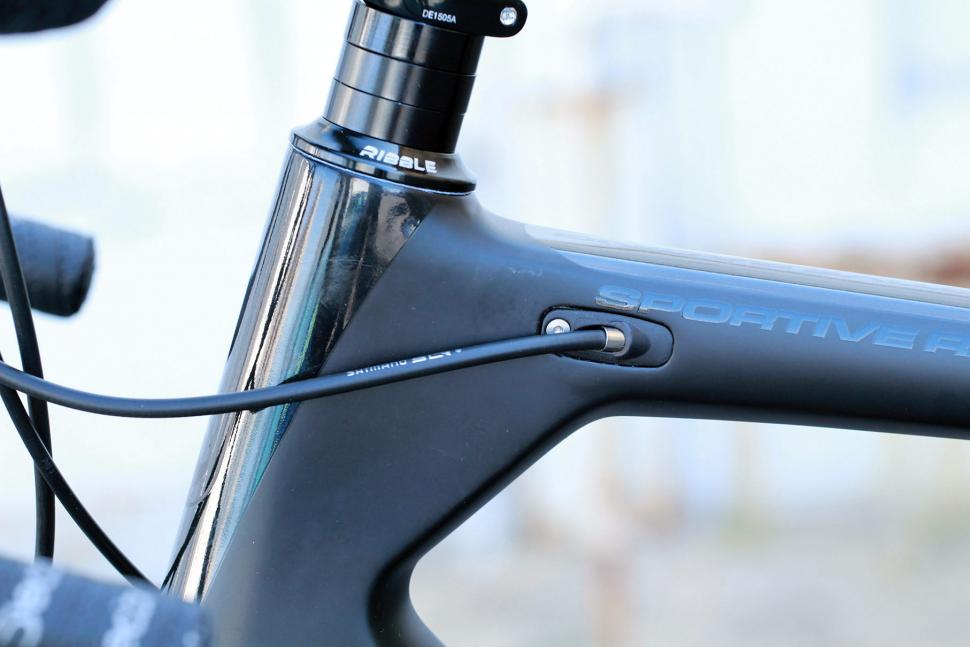
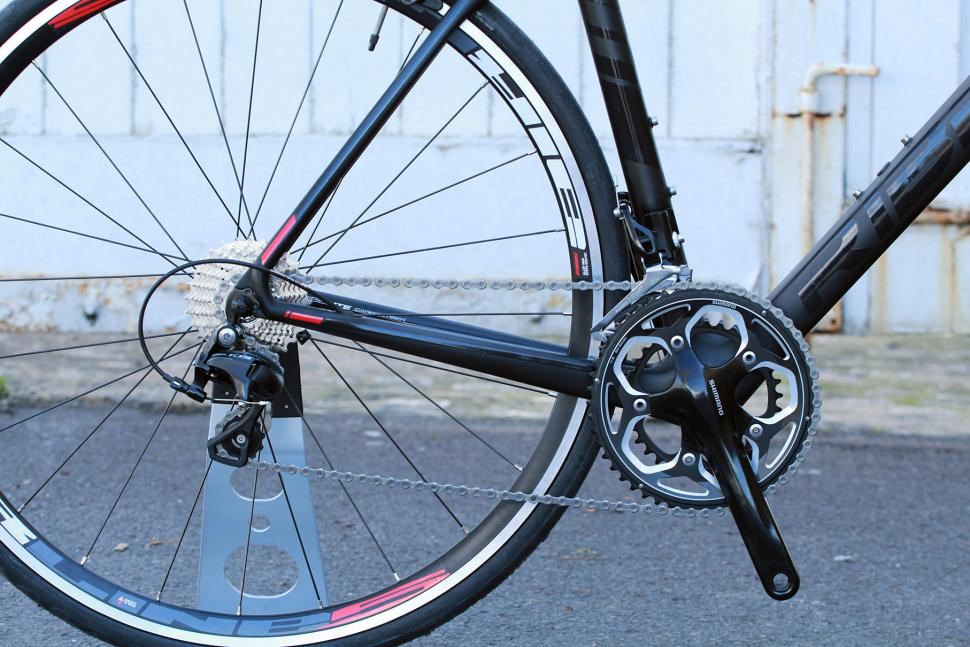

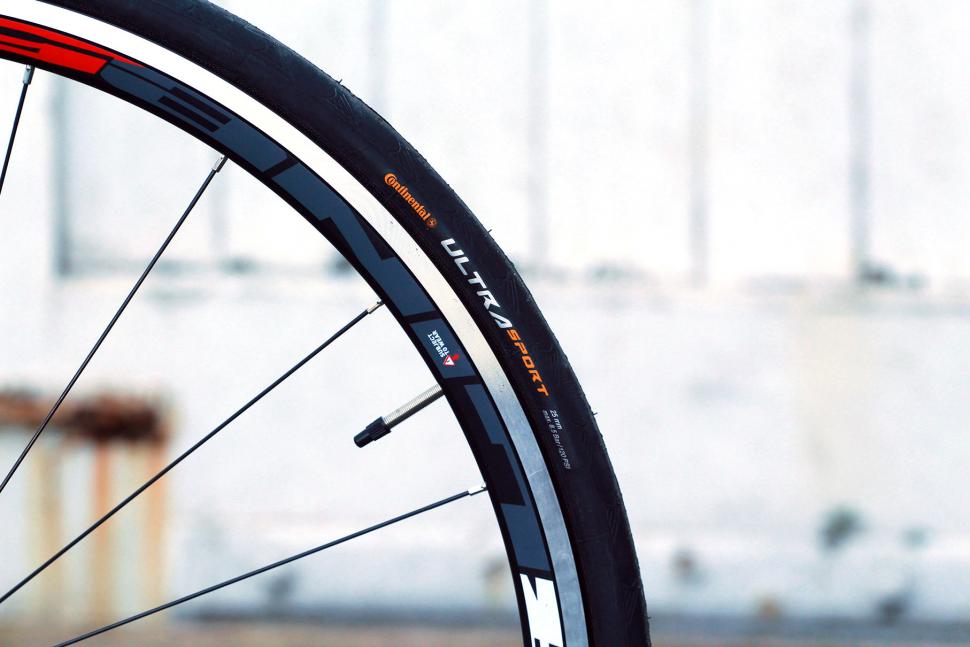
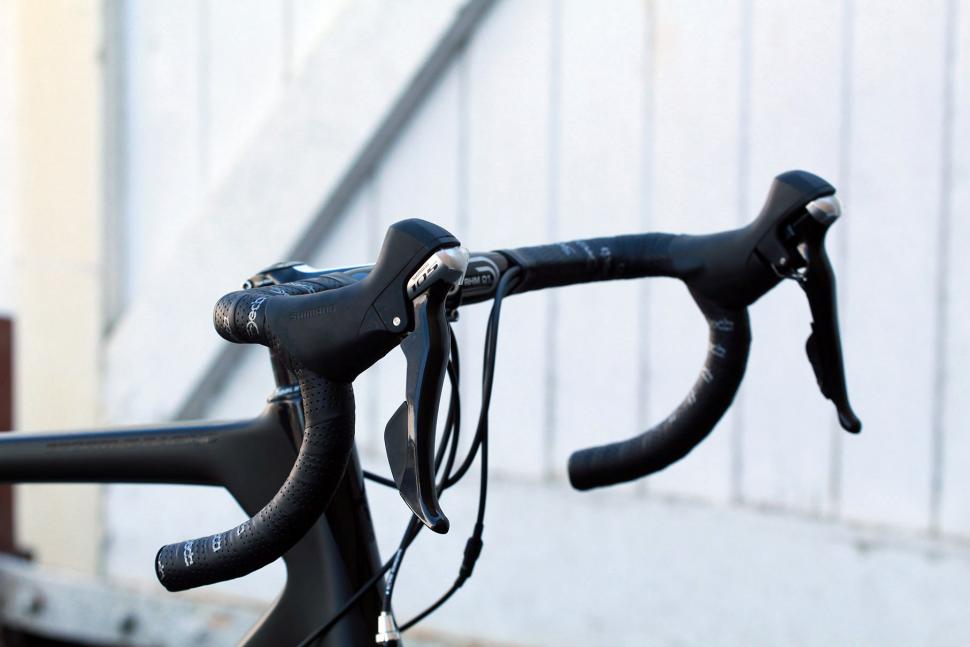

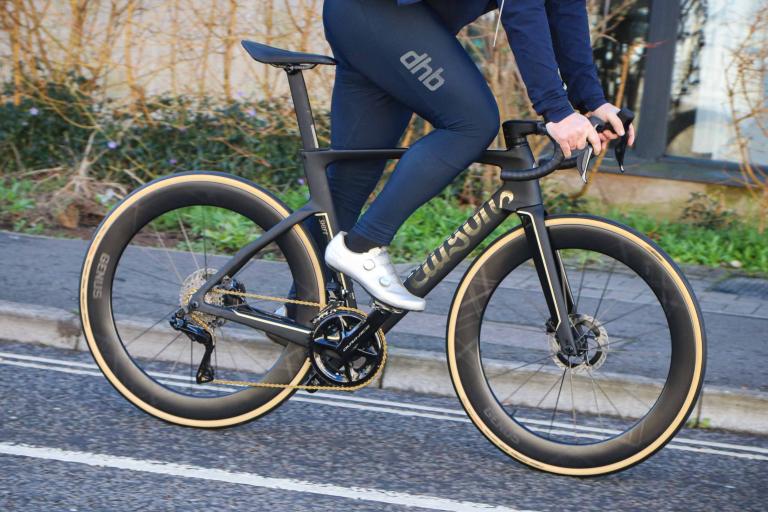
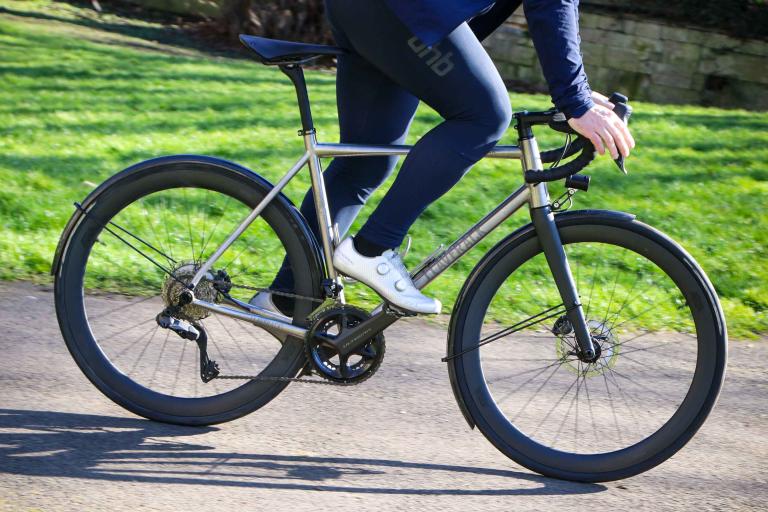


Add new comment
1 comments
'We often bang on about frames being 'vertically stiff yet laterally compliant'
No wonder it only got 3 stars